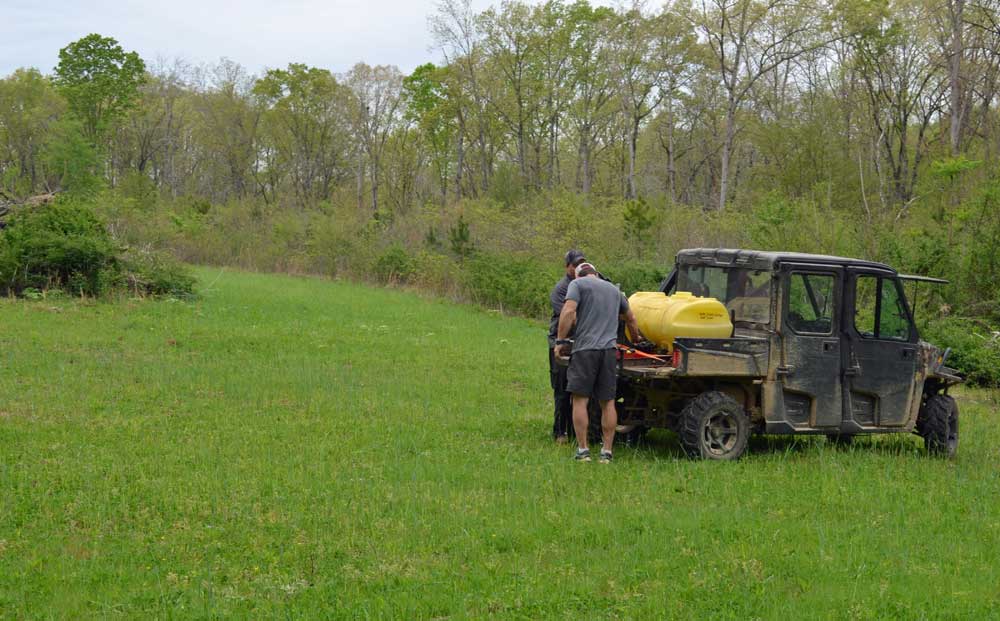
Many who are unfamiliar with herbicides are afraid of spraying a non-selective herbicide like round-up (glyphosate) in fear that it may affect their planting. Glyphosate is a contact-only herbicide and has no soil or residual activity. In other words, if it doesn’t touch the green tissue of a living plant it is non-effective. This allows you to spray very close to your planting time to help your crop get a jump start on any weeds. The ideal timing for mowing and spraying can take 2-4 weeks before planting to really get good results, so the time to act is now. Read these 5 tips for good pre–planting herbicide applications:
1. Read the Label
The information on the herbicide label contains great info and will identify what weeds it kills and what the recommended rate is.
2. Spray Early
Spray when grasses or broadleaf weeds are young and thriving. If the field is tall and overgrown, the results will often be less than desirable. If weeds are already tall and mature mow first and return a few days later to spray the new re-growth even if it is minimal.
3. Use Ammonium Sulfate
For optimal results, use AMS (ammonium sulfate). AMS will increase the effectiveness of the herbicide by helping the weeds readily translocate the herbicide to the roots for a good kill.
4. Don’t Skimp on Water
Many times the correct amount of herbicide is used but not enough water is added to thoroughly spray the field. In a pre-plant burn down, always try and use 15-20 gallons of solution per acre.
5. Know Your Coverage Area
Know the size of the fields you are going to be spraying so you can apply the appropriate amount of solution. To practice and calibrate your sprayer, find a field and measure it with a GPS or use a rangefinder to determine the acreage. Fill your spray tank with just water and take note of the speed you travel and the amount of water you apply over the known area. This will eliminate guesswork and yield better spray results.




























